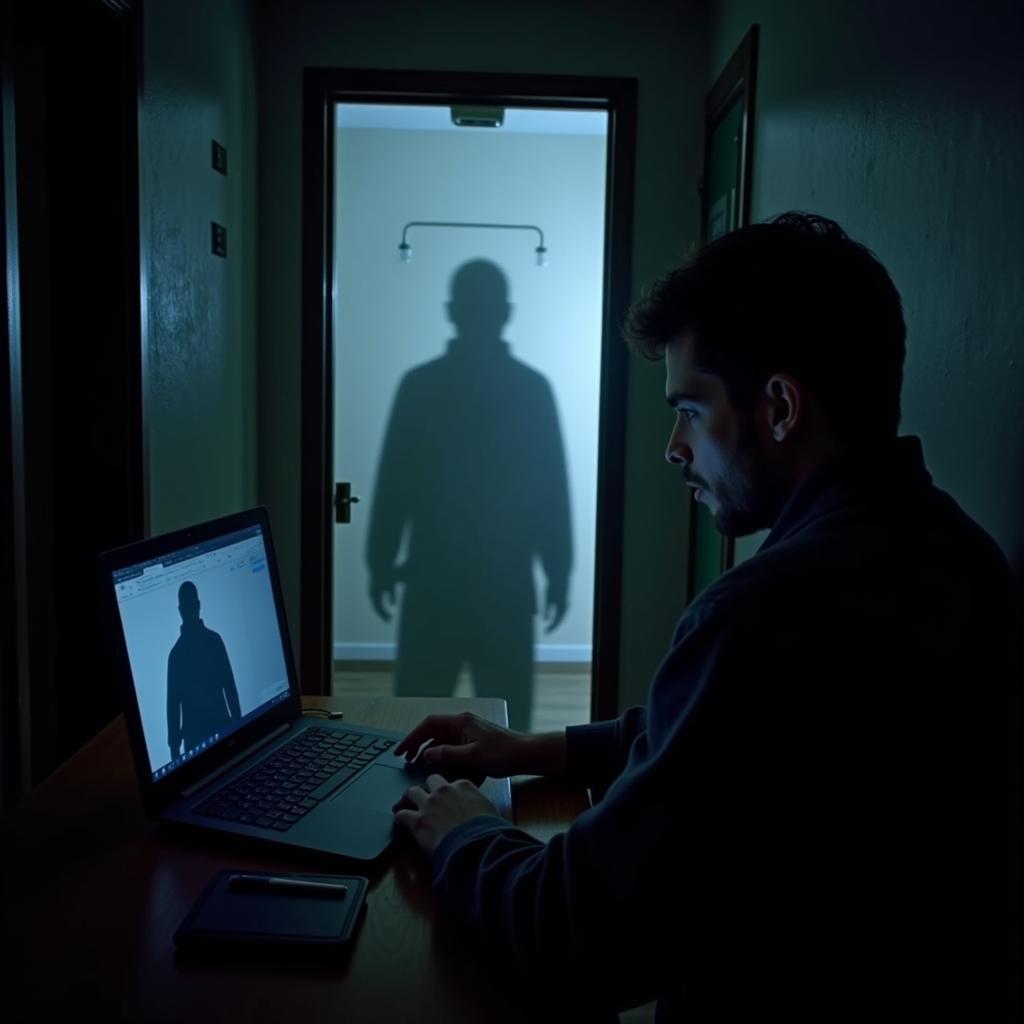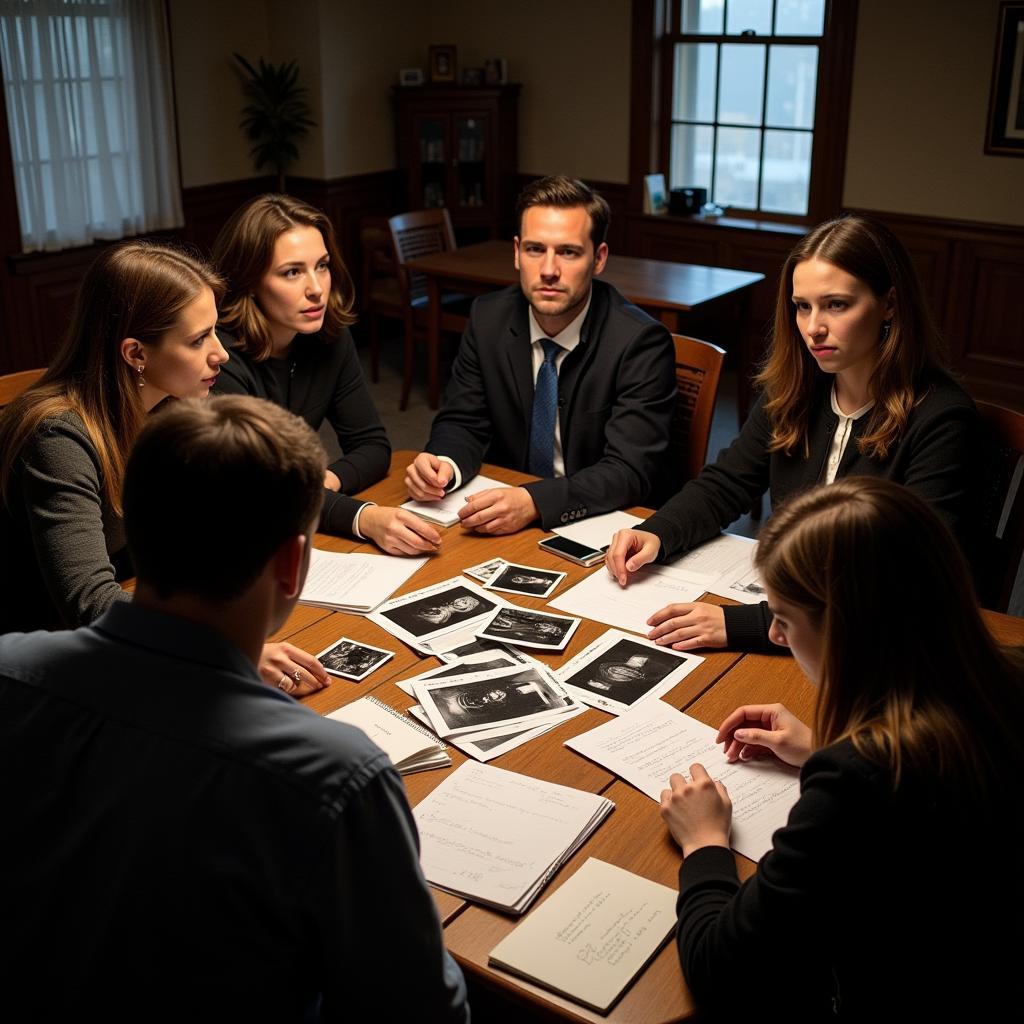Research Codes are essential tools in the world of paranormal investigation. They provide a structured framework for documenting, analyzing, and interpreting the often-elusive evidence gathered during investigations. Just as scientists use codes to categorize and understand the natural world, paranormal researchers rely on these codes to bring order and clarity to the enigmatic realm of the supernatural.
Delving Deeper: The Importance of Research Codes
Imagine a world where every piece of paranormal evidence – every EVP recording, every shadow figure sighting, every instance of unexplained temperature fluctuation – existed in isolation. It would be a chaotic landscape of disjointed experiences, making it nearly impossible to identify patterns, draw meaningful conclusions, or advance our understanding of these phenomena.
This is where research codes come in. They act as a universal language, allowing investigators from different backgrounds, locations, and beliefs to share their findings in a standardized way. This facilitates collaboration, promotes consistency in data collection, and paves the way for more robust and reliable research.
 Paranormal Investigation Research Codes
Paranormal Investigation Research Codes
Types of Research Codes: A Glimpse into the Investigator’s Toolkit
Paranormal research utilizes a diverse range of codes, each designed to capture specific aspects of an investigation. These codes can be broadly categorized into the following:
- Environmental Codes: These codes document changes in the surrounding environment, such as temperature fluctuations, electromagnetic field (EMF) readings, and unexplained noises.
- Visual Codes: Visual codes are used to categorize sightings of apparitions, shadow figures, or other unusual visual phenomena.
- Audio Codes: These codes classify EVP recordings based on their clarity, content, and potential origin.
- Physical Codes: Physical codes document physical interactions, such as objects moving independently, unexplained touches, or physical sensations experienced by witnesses.
Using Research Codes Effectively: A Guide for Aspiring Investigators
While the concept of research codes may seem straightforward, their effective implementation requires careful consideration and adherence to best practices. Here are some key points to remember:
- Consistency is Key: Use the same set of codes throughout an investigation and across multiple investigations to ensure data uniformity.
- Be Specific: Choose the most specific code that accurately reflects the observed phenomenon. For instance, instead of simply using “Visual Anomaly,” specify whether it was a “Shadow Figure” or a “Full-Bodied Apparition.”
- Context Matters: Always provide detailed descriptions alongside the codes. For example, when documenting an EVP, note the time, location, and any relevant environmental factors.
- Don’t Jump to Conclusions: Avoid assigning codes based on assumptions or preconceived notions. Let the evidence guide your coding decisions.
 Analyzing Paranormal Research Evidence
Analyzing Paranormal Research Evidence
The Power of Collaboration: Sharing and Comparing Research Data
One of the most significant advantages of using research codes is the ability to share and compare data with other investigators. By pooling information and identifying trends across multiple investigations, we can gain deeper insights into the nature of these phenomena.
Online databases and research platforms now allow investigators to upload their coded data, making it accessible to a wider audience. This collaborative approach is essential for moving beyond isolated experiences and towards a more comprehensive understanding of the paranormal.
Beyond Codes: The Future of Paranormal Research
While research codes are invaluable tools, it’s important to remember that they are just one piece of the puzzle. The future of paranormal research lies in combining these structured methods with advancements in technology, psychology, and other scientific disciplines.
As we continue to explore the boundaries of human perception and the mysteries of the universe, one thing remains certain: the quest to understand the paranormal is an ongoing journey, and research codes will continue to play a vital role in guiding our path.
Frequently Asked Questions About Research Codes
1. What are some common research codes used in paranormal investigations?
Common codes include EMF (electromagnetic field fluctuations), EVP (electronic voice phenomenon), and TEMP (temperature anomalies), among others. Specific codes exist for visual sightings, physical interactions, and environmental changes.
2. Are there standardized research codes used by all paranormal investigators?
While there are widely accepted codes, there is no single standardized system used universally. However, many organizations and research groups have developed their own comprehensive coding systems.
3. How can I learn more about research codes and their application in paranormal investigations?
Numerous resources are available, including books, online forums, and workshops hosted by paranormal research organizations.
4. Can I develop my own research codes for personal investigations?
Yes, you can create your own codes based on your specific research needs. However, it’s recommended to familiarize yourself with existing systems to ensure consistency and facilitate data sharing.
5. What are some challenges associated with using research codes in paranormal investigations?
Challenges include maintaining objectivity, ensuring consistent application of codes, and interpreting subjective experiences within a standardized framework.
6. How do research codes contribute to the credibility of paranormal research?
By providing a structured and systematic approach to data collection and analysis, research codes enhance the objectivity and rigor of paranormal investigations.
7. What is the ultimate goal of using research codes in paranormal research?
The goal is to identify patterns, establish correlations, and ultimately gain a deeper understanding of paranormal phenomena.
Need Assistance With Your Paranormal Research?
Our team of experienced investigators is here to help. Contact us at:
Phone: 0904826292
Email: research@gmail.com
Address: No. 31, Alley 142/7, P. Phú Viên, Bồ Đề, Long Biên, Hà Nội, Việt Nam
We offer 24/7 support and are dedicated to assisting you with all your Paranormal Research needs. Don’t hesitate to reach out – we’re here to help you navigate the unexplained.
 Contact Our Paranormal Research Team
Contact Our Paranormal Research Team
For further reading on conducting thorough research, you might find our articles on title pages for research papers and acknowledgement of a research paper insightful. Remember, acknowledging the contributions of others is crucial in any field, especially when dealing with sensitive subjects like paranormal phenomena.
If you’re presenting your findings, our guide on acknowledgements on research poster can be invaluable. And for those interested in the potential of online platforms for data collection, our article on roblox research panel offers a unique perspective.
Lastly, don’t forget to show appreciation for the unsung heroes of research on research admin day. They play a vital role in ensuring the smooth operation of any research endeavor.